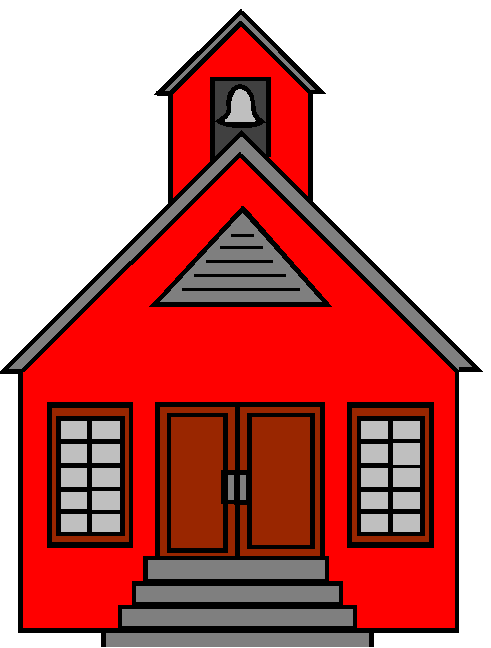Describing Schools
3.2

Activity 1
(3.2)
1. Do you believe
that schools actually represent the social structure of the neighborhood
that attends? The schools in upper scale neighborhoods usually have nice
equipment; the schools of poor neighborhoods usually do not. Who is better
off in the long run?
***Please head your work appropriately or I will not grade
it.
|
-How can schools be described?
Schools can be described
by the characteristics of the school. For instance, they can be categorized
according to its curriculum. For example, high schools may be vocational,
pathway or general. Magnet schools are organized
around specific academic disciplines such as math, science, computers,
etc.
-Metaphors for
schools
Some models view
schools metaphorically. Suggested metaphors might be that schools are like a
bank, a business, factories, home, church, school-as-family, school within a
school and teams.
-Schools and social
class
According to Jean Anyan
(1996)....
Schools are broken into social class. There are basically four
kinds.
The working-class school. Teachers give dittos. Their time is
spent on discipline, classroom management, and absentee paper work. Teachers
have low expectations for their students; this is reflected in the student's
ability. The student makes no decisions.
The middle-class school. The
student makes some decisions. The lesson usually comes from the textbook. The
student does not have the opportunity to analyze.
The affluent
professional school. Here the student can express their individuality and
make choices. The student has few rules to follow.
The executive elite
school. Students' reason and problem solve. Teacher-student relationships
are positive.
Activity 2 (3.2)
Which class does our school
fall into and why?
***Please head
your work appropriately or I will not grade it. |
Schools reflect the socioeconomic
status of the communities they serve.
-Schools as a
reflection of society.
Schools are social
institutions. In institution is an organization established by society
to maintain and improve life. Schools often mirror national and local
culture.
Rural schools are often the
focal point of community life. They usually hold values and beliefs that are
conservative. The small size of the school provides a family-like atmosphere,
but lacks the curricular experiences found in suburban or urban schools.
The
differences among the environments that surround the school can be enormous. If
an urban school lies in a drug infested, high crime-related, poverty-stricken,
decaying city, this will be reflected within the school. Those families who have
money will move. As a result, students in urban districts are increasingly from
low-income families.
The physical environment of the school reflects and
helps to create the schools culture. The physical environment can have a
positive or negative impact on those who spend time in the school.
School
culture
Activity 3 (3.7)
1. How can the environment
around the school affect the environment within the school?
2. Do
students in urban schools have equal access to up-to-date
technologies?
3. What technologies should be available to all students?
To all teachers?
4. What are some of our school's traditions?
***Please head your work appropriately or I will not grade
it. |
Every school is unique. School culture varies from school to school.
-Formal practices
of schools.
Teachers
and students are grouped several ways.
The self-contained
classroom is the most traditional way elementary classrooms are
arranged. The teacher has about twenty-five children in a self-contained
classroom.
The open-space classroom is a situation where
children are free to move from station to station. Much of the students work
independently. It is usually large instructional room, with movable walls.
Several teachers provide individual guidance. Middle and high school students
typically have five or more classes with teachers who specialize in a specific
subject area. This classroom teaching arrangement is called departmentalization.
The traditions of the school are elements of a
school's culture that are handed down year after year. They reflect the beliefs
of the community. Each classroom has it's own culture, determined by both the
teacher and the students.
Vocabulary
Magnet school-a
school offering a curriculum that focusses on a specific area such as the
performing arts, mathematics, science, international studies, or technology.
Magnet schools, which often draw students from a larger attendance area then
regular schools, are frequently developed to promote voluntary desegregation.
Institution-any
organization a society establishes to maintain, and improve, its way of
life.
School culture-the
collective "way of life" characteristic of a school; a set of beliefs, values,
traditions, and ways of thinking and behaving that distinguish it from other
schools.
Self-contained
classroom-an organizational structure for schools in which one teacher
instructs a group of students in a single classroom.
Open-spaced
schools-schools that have large instructional areas with movable
walls.
Departmentalization-an
organizational arrangement for schools in which students move from classroom to
classroom for instruction in different subject areas.
Classroom
culture-the "way of life" characteristic of a classroom group;determined
by the social dimensions of the group and the physical characteristics of the
setting.

 
|